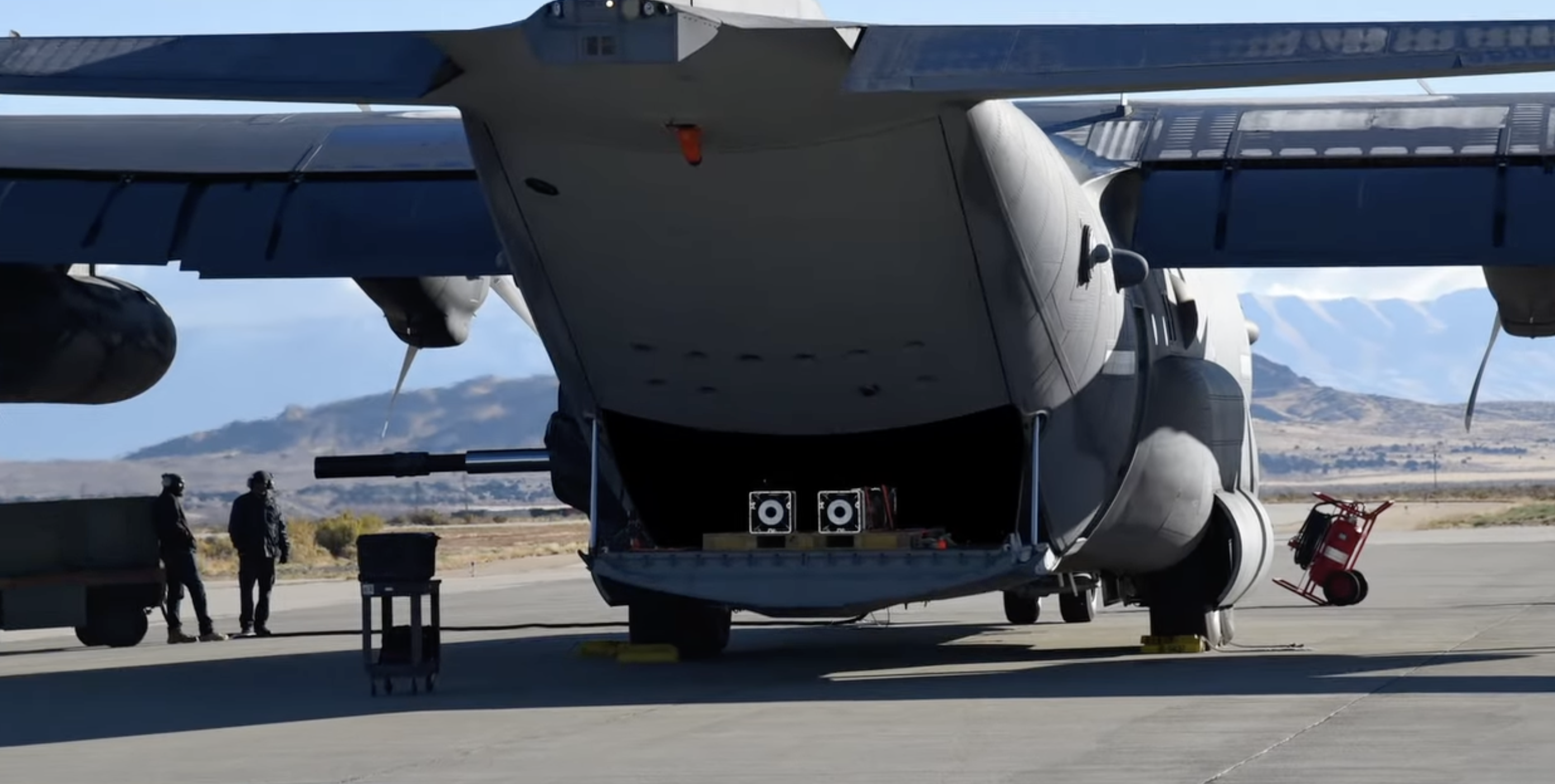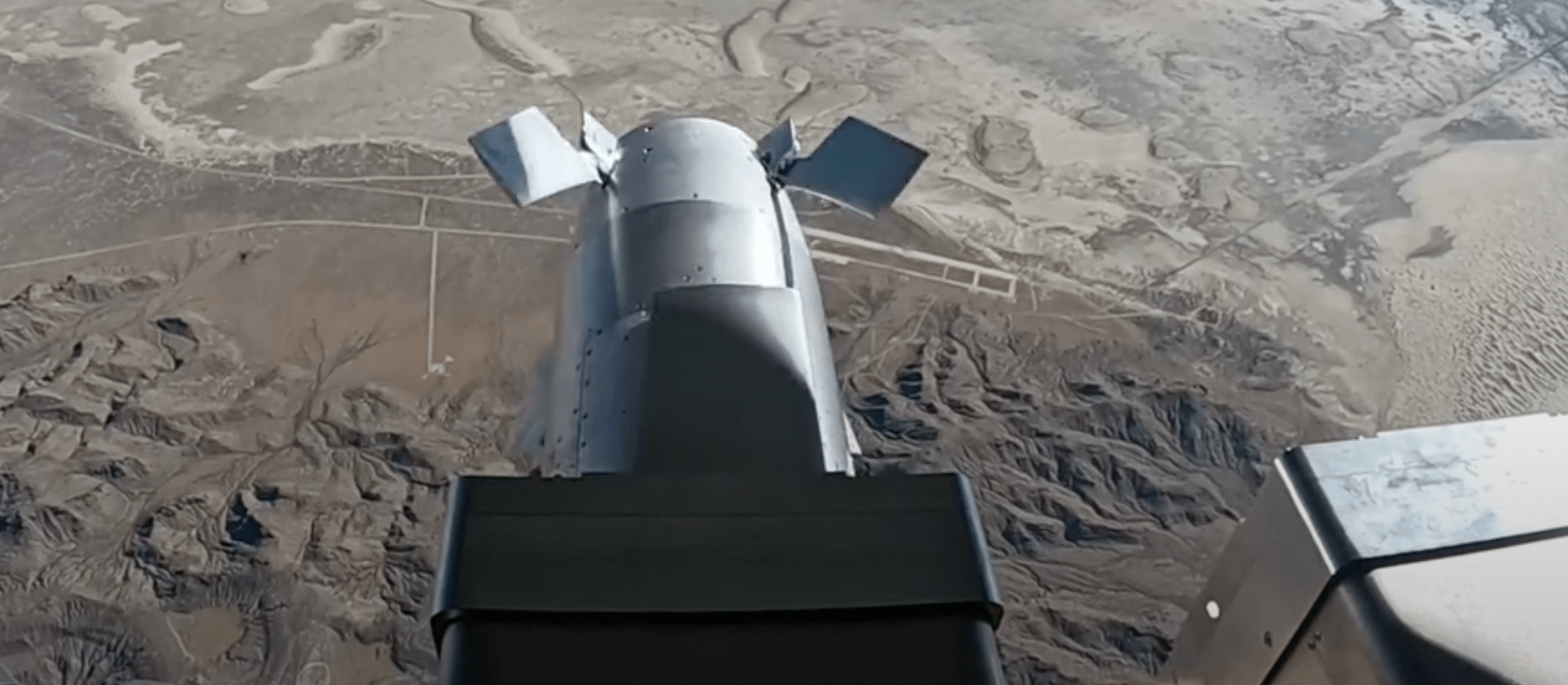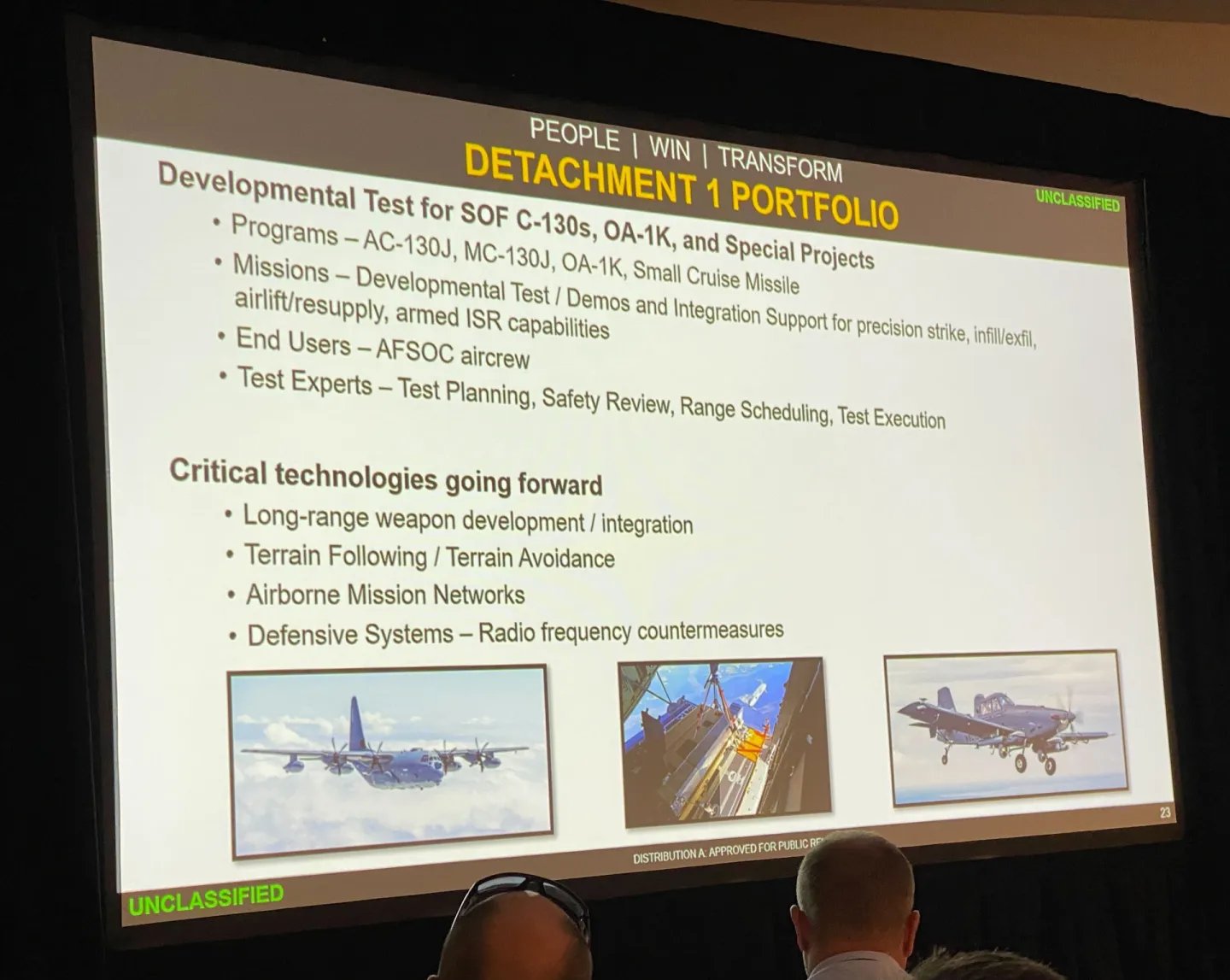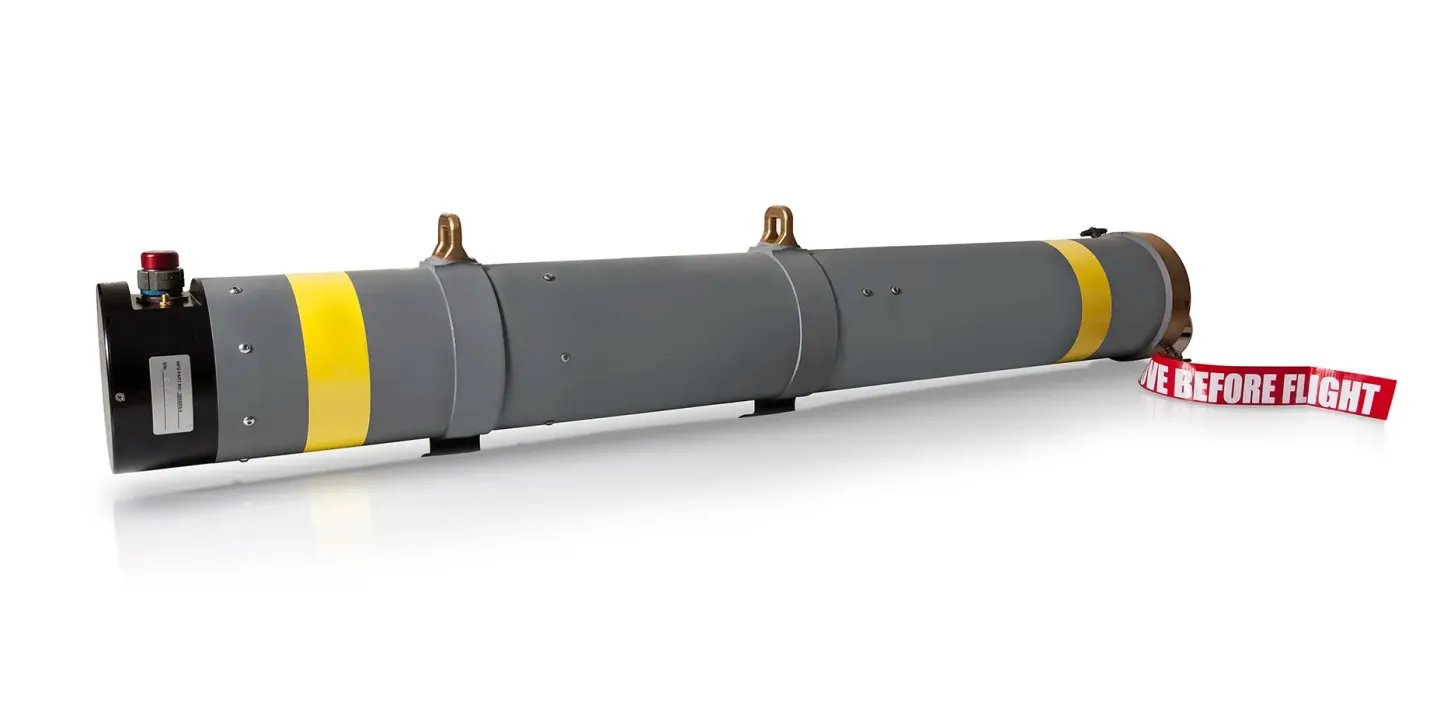The Black Arrow, also known as the Small Cruise Missile, has completed a guided flight test from an AC-130J Ghostrider gunship, the weapon’s manufacturer, Leidos, has confirmed. The Black Arrow, which is intended to carry a range of different payloads, and not just a kinetic warhead, arrives at a time when the Pentagon is looking at harnessing the potential of lower-cost weapons that can be readily produced at scale to meet the likely demands of future conflicts.

Leidos only recently announced the flight test although it occurred last November. The company also published a video of the test, showing Black Arrow being launched from a pair of Ramp Launch Tubes (RLT) mounted on the rear ramp of the AC-130J. The Black Arrow is released tail-first from the RLT, after which its single-piece pop-out wing deploys. The motor can then be seen starting. The weapon’s subsequent impact into the ground is not shown in the video.
 A pair of Ramp Launch Tubes (RLT) loaded with Black Arrow SCMs on the rear ramp of an AC-130J. Leidos screencap
A pair of Ramp Launch Tubes (RLT) loaded with Black Arrow SCMs on the rear ramp of an AC-130J. Leidos screencap  Cruciform tailfins deploy as the Black Arrow SCM is ejected from the RLT. Leidos screencap
Cruciform tailfins deploy as the Black Arrow SCM is ejected from the RLT. Leidos screencap As well as using the RLT, Leidos says that Black Arrow can be launched from a palletized system or conventionally released from a stores pylon on a fixed-wing aircraft.
“The test demonstrated aircraft compatibility, system performance, waypoint uplinks, guidance accuracy as well as integration with the Naval Surface Warfare Center Battle Management System (BMS),” the company said in a media release.
The test was conducted as part of a Collaborative Research and Development (CRADA) agreement between Leidos, the U.S. Special Operations Command (SOCOM), and the Air Force Special Operations Command (AFSOC).
Weighing around 200 pounds, the Black Arrow is intended to be a low-cost “mission-adaptable delivery platform,” rather than a traditional munition. This means it can be configured for both kinetic and non-kinetic missions. At the same time, it’s designed to facilitate spiral upgrades.
The CRADA program for the SCM, now known as Black Arrow, began in 2022, since when the interest in so-called affordable mass has only grown. Leidos says it has used model-based system engineering practices as well as open system architecture to ensure that Black Arrow is affordable and can be built rapidly at scale, if required.
“SCM is a key capability, rapidly advancing AFSOC’s ability to close long-range kill chains,” Col. Justin Bronder, SOCOM PEO Fixed Wing, said at the Special Air Warfare Symposium held at Eglin Air Force Base, Florida, last month.
Previously, we had gotten our first glimpse of what was then only known as the Small Cruise Missile when SOCOM included a picture of it in a briefing at the annual SOF Week conference in May of last year.
 A picture of a briefing slide containing the image from the Small Cruise Missile test that was shown at the SOF Week conference in May of 2024. Jamie Hunter
A picture of a briefing slide containing the image from the Small Cruise Missile test that was shown at the SOF Week conference in May of 2024. Jamie Hunter At the time, SOCOM said the SCM was one of its top priorities and could be launched from the MC-130J Commando II special operations tanker/transport aircraft, as well as the AC-130J, and potentially other platforms.
Adding standoff strike capabilities to aircraft like these is seen as a critical way to ensure their continued relevance, especially in future high-end conflicts, including a potential one in the Pacific against China. For the AC-130J, in particular, being able to address targets relatively quickly far from the current station it is on would allow it to support strikes across a much larger geographical area.
Right now the aircraft can drop Small Diameter Bombs, at a range of dozens of miles. That would be enhanced massively with a small cruise missile. A missile with a 200 mile range would allow the AC-130 to strike targets anywhere within a 125,664 square mile circle around it. An SDB, with say a range of say 30 miles when dropped from the AC-130’s launch altitude and speed, allows the aircraft to strike anywhere within a 2,827 square mile circle. So we are talking about a massive difference here in capability
Then there is using the aircraft as a standoff weapons delivery platform in a high-end fight where it’s direct fire capabilities will be of less value due to the range of modern enemy air defenses. You can learn all about the future of AC-130 in our video below:

Before that, in 2021, SOCOM issued a contracting notice regarding a Stand-Off Precision Guided Weapon Program Cruise Missile outlining interest in a weapon of this type. The specifications included a range of between 200 and 400 nautical miles (around 230 and 460 miles) while the weapon was required to fit inside a standardized cylindrical Common Launch Tube (CLT).
 A Common Launch Tube. Systima
A Common Launch Tube. Systima The size and weight of the SCM/Black Arrow rules out its carriage in a CLT, which can accommodate payloads up to 42 inches in length and 5.95 inches in diameter, and has a 100-pound weight limit, according to SOCOM.
The Stand-Off Precision Guided Weapon Program Cruise Missile notice also outlined a requirement for an electro-optical/infrared seeker, with plans to incorporate a multi-mode seeker package “able to acquire and/or reacquire targets in flight.” Other key attributes specified in the notice were a long-range, datalink connection to Situational Awareness Data Link (SADL) (threshold) and SADL/Link-16 (objective), resilient GPS/INS to work in a denied GPS environment, “a sensor capable of identifying targets once over the target area, and a payload to effect the target,” the notice added.
Leidos says it’s under contract with SOCOM to continue Black Arrow test and evaluation activities throughout 2025.
At this stage, however, it’s unclear what additional platforms it might be tested on, or what kinds of payloads might be involved.
The size and weight of Black Arrow would render it suitable for carriage by a wide range of platforms, including drones.
Black Arrow also arrives at a time when the U.S. military, more generally, is looking at low-cost air vehicles that could be turned into cruise missiles, as well as electronic attackers.
Central to these concerns is the ability to expand the available industrial base to help stock up on more affordable weapons ahead of a future high-end conflict, such as one against China, and sustaining those inventories in a protracted fight.
The Air Force is now running the Enterprise Test Vehicle (ETV) program, with a view to addressing some of these supply chain issues, and particularly as a stepping stone to a new lower-cost cruise missile.
Leidos subsidiary Dynetics — alongside Anduril Industries, Integrated Solutions for Systems, Inc., and Zone 5 Technologies — was selected in July of last year to design, build, and flight test an ETV concept.
Interestingly, the Dynetics offering for the Air Force’s ETV program looks to be very similar to the SCM/Black Arrow.
 An image of the Dynetics ETV design concept. Leidos Dynetics via DIU
An image of the Dynetics ETV design concept. Leidos Dynetics via DIU With testing of the SCM/Black Arrow continuing under SOCOM contract, and with the same design apparently also being offered for the Air Force’s ETV initiative, it will certainly be interesting to see what’s next in store for the Leidos product.
Contact the author: [email protected]

 By The War Zone | Created at 2025-04-05 17:45:59 | Updated at 2025-04-06 10:56:54
17 hours ago
By The War Zone | Created at 2025-04-05 17:45:59 | Updated at 2025-04-06 10:56:54
17 hours ago








